Recommendations
East West understands that each client have different interests and preference. Listed below are tour and package selections that will help you in planning your itinerary. These items are grouped according to the type of experience you have selected.
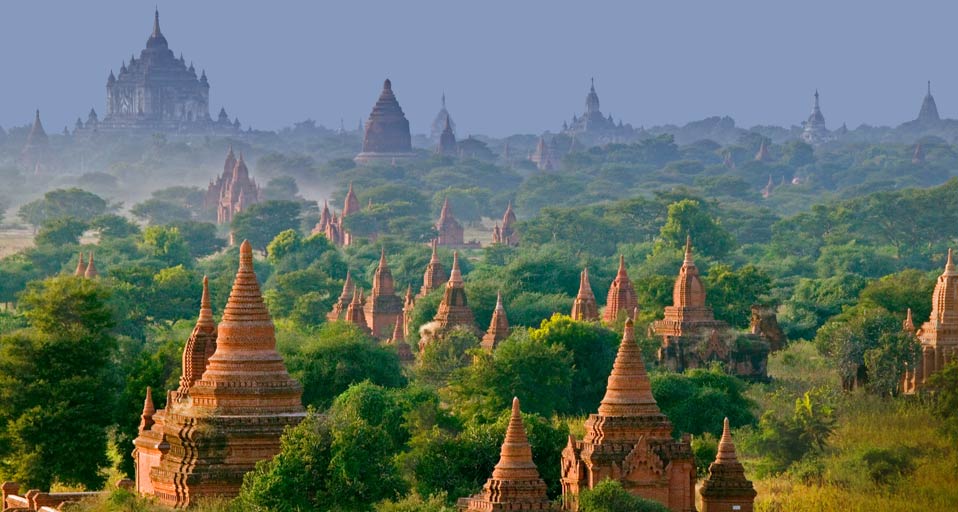
Bagan - at my leisure
Enjoy Bagan at your own leisure and pace. You may choose to simply relax and enjoy the facilities of your hotel or go explore the city in your own way to see what treasures you discover.
Enjoy Bagan at your own leisure and pace. You may choose to simply relax and enjoy the facilities of your hotel or go explore the city in your own way to see what treasures you discover.
Please select the date of travel:
Start Planning!
Start Planning!
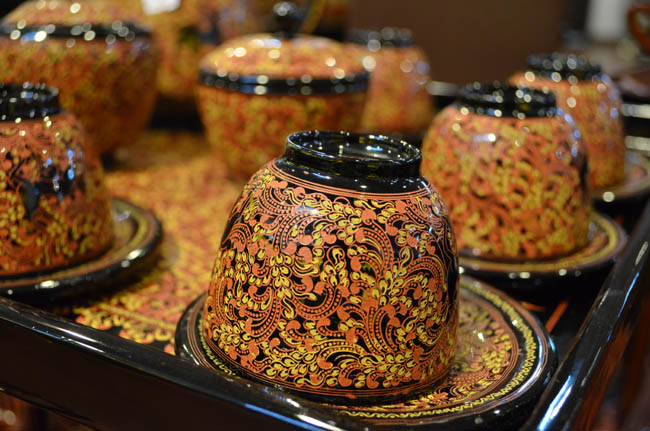
Lacquer ware factory
The lacquer takes its roots in China it there has a few three thousand years, and then developed in all the Southeast Asia. In Myanmar the tree which one takes the resin is it Thit-si. These trees push naturally in whole forests almost in all Myanmar in light altitude. One takes the resin, a little like one does it with latex, by notches at the base of the trunk on which one fixes small bowls in bamboo. The sap of the lacquer tree has a very strong adhesive quality and a splendid brilliance. It has many qualities as to make impermeable the objects which it covers. It adheres on many surfaces, bamboo, woods, sheets of palm tree, metal and leather. It resists the insects and guards on all occasions its flexibility.
The lacquer takes its roots in China it there has a few three thousand years, and then developed in all the Southeast Asia. In Myanmar the tree which one takes the resin is it Thit-si. These trees push naturally in whole forests almost in all Myanmar in light altitude. One takes the resin, a little like one does it with latex, by notches at the base of the trunk on which one fixes small bowls in bamboo. The sap of the lacquer tree has a very strong adhesive quality and a splendid brilliance. It has many qualities as to make impermeable the objects which it covers. It adheres on many surfaces, bamboo, woods, sheets of palm tree, metal and leather. It resists the insects and guards on all occasions its flexibility.
Please select the date of travel:
Start Planning!
Start Planning!
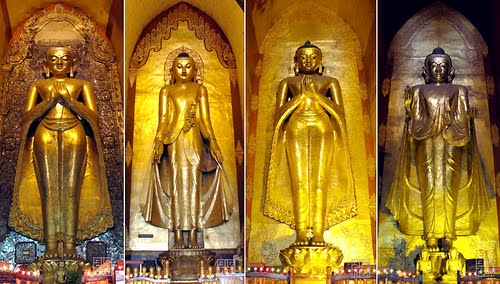
Anada Temple
Ananda temple is considered to be one of the most surviving masterpiece of the Mon architecture. Also known as the finest, largest, best preserved and most revered of the Bagan temples. During the 1975 earthquake, Ananda suffered considerable damage but has been totally restored.
Ananda temple is considered to be one of the most surviving masterpiece of the Mon architecture. Also known as the finest, largest, best preserved and most revered of the Bagan temples. During the 1975 earthquake, Ananda suffered considerable damage but has been totally restored.
Please select the date of travel:
Start Planning!
Start Planning!
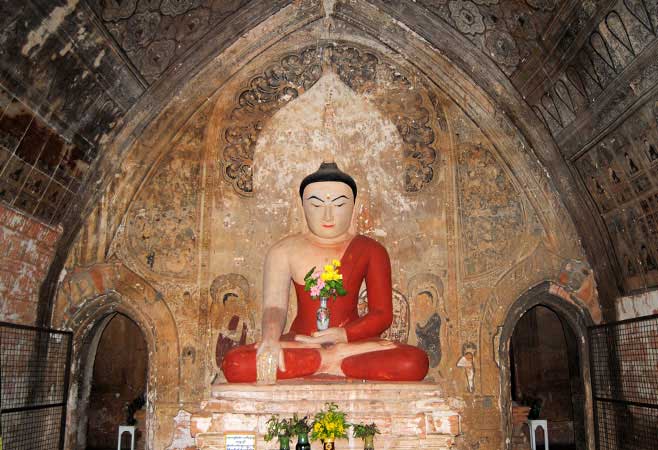
Gubyaukgyi temple at Wetkyi-in village
The Gubyaukgyi temple near Wetkyi-in village North East of old Bagan was built by King Kyanzittha in the early 12th century. During his reign the empire saw prosperity and the construction of grand temples like the Ananda and the Myazedi pagoda.
The Gubyaukgyi?s architecture shows Indian influence, particularly the spire which resembles that of another temple in Bagan, the Mahabodhi. Both are based on the Mahabodhi temple of Bodh Gaya in India, the place where the Buddha reached enlightenment some 2,500 years ago.
The Gubyaukgyi temple near Wetkyi-in village North East of old Bagan was built by King Kyanzittha in the early 12th century. During his reign the empire saw prosperity and the construction of grand temples like the Ananda and the Myazedi pagoda.
The Gubyaukgyi?s architecture shows Indian influence, particularly the spire which resembles that of another temple in Bagan, the Mahabodhi. Both are based on the Mahabodhi temple of Bodh Gaya in India, the place where the Buddha reached enlightenment some 2,500 years ago.
Please select the date of travel:
Start Planning!
Start Planning!

Shwezigon Pagoda
The golden Shwezigon Paya in Bagan is one of the most significant religious buildings in Myanmar, for it served as a prototype for later stupas built throughout the country and marked an important development in the relationship between traditional Burmese religion and Theravada Buddhism.
The golden Shwezigon Paya in Bagan is one of the most significant religious buildings in Myanmar, for it served as a prototype for later stupas built throughout the country and marked an important development in the relationship between traditional Burmese religion and Theravada Buddhism.
Please select the date of travel:
Start Planning!
Start Planning!
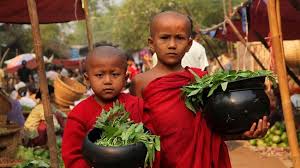
Nyaung U Market
Located in the northeastern part of Bagan, Nyaung U Market is Nyaung U Village's local market. There, you can find nearly all Myanmar goods in its different sections, from the traditional longyi to other kinds of clothes, from rattan items to tea leaves - one of the country?s specialties
Located in the northeastern part of Bagan, Nyaung U Market is Nyaung U Village?s local market. There, you can find nearly all Myanmar goods in its different sections, from the traditional longyi to other kinds of clothes, from rattan items to tea leaves - one of the country?s specialties. Also, this is an excellent occasion for you to take pictures of amazingly fresh veggies, fine rice, and really mingle with native people, ?studying? a part of their life.
Located in the northeastern part of Bagan, Nyaung U Market is Nyaung U Village's local market. There, you can find nearly all Myanmar goods in its different sections, from the traditional longyi to other kinds of clothes, from rattan items to tea leaves - one of the country?s specialties
Located in the northeastern part of Bagan, Nyaung U Market is Nyaung U Village?s local market. There, you can find nearly all Myanmar goods in its different sections, from the traditional longyi to other kinds of clothes, from rattan items to tea leaves - one of the country?s specialties. Also, this is an excellent occasion for you to take pictures of amazingly fresh veggies, fine rice, and really mingle with native people, ?studying? a part of their life.
Please select the date of travel:
Start Planning!
Start Planning!

Gubyaukgyi Temple at Myinkaba village
The Gubyaukgyi temple, located just south of Bagan, Myanmar, in Myinkaba Village, is a Buddhist temple built in 1113 AD by Prince Yazakumar, shortly after the death of his father, King Kyansittha of the Pagan Dynasty. The temple is notable for two reasons. First, it contains a large array of well-preserved frescoes on its interior walls, the oldest original paintings to be found in Bagan. All of the frescoes are accompanied by ink captions written in Old Mon, providing one of the earliest examples of the language's use in Myanmar. Second, the temple is located just to the west of the Myazedi pagoda, at which was found two stone pillars with inscriptions written in four, ancient Southeast Asian languages: Pali, Old Mon, Old Burmese, and Pyu. The inscription on the pillar displayed by the Myazedi pagoda has been called the Burmese Rosetta Stone, given its significance both historically and linguistically, as a key to cracking the Pyu language.
The Gubyaukgyi temple, located just south of Bagan, Myanmar, in Myinkaba Village, is a Buddhist temple built in 1113 AD by Prince Yazakumar, shortly after the death of his father, King Kyansittha of the Pagan Dynasty. The temple is notable for two reasons. First, it contains a large array of well-preserved frescoes on its interior walls, the oldest original paintings to be found in Bagan. All of the frescoes are accompanied by ink captions written in Old Mon, providing one of the earliest examples of the language's use in Myanmar. Second, the temple is located just to the west of the Myazedi pagoda, at which was found two stone pillars with inscriptions written in four, ancient Southeast Asian languages: Pali, Old Mon, Old Burmese, and Pyu. The inscription on the pillar displayed by the Myazedi pagoda has been called the Burmese Rosetta Stone, given its significance both historically and linguistically, as a key to cracking the Pyu language.
Please select the date of travel:
Start Planning!
Start Planning!
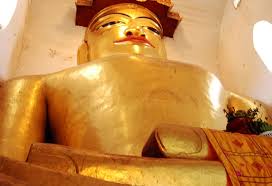
Manuha Temple
Manuha Temple is a Buddhist temple built in Myinkaba (located near Bagan), by captive Mon King Manuha in 1067, according to King Manuha's inscriptions. It is a rectangular building of two storeys. The building contains three images of seated Buddhas and an image of Buddha entering Nirvana. Manuha Temple is one of the oldest temples in Bagan.
Manuha Temple is a Buddhist temple built in Myinkaba (located near Bagan), by captive Mon King Manuha in 1067, according to King Manuha's inscriptions. It is a rectangular building of two storeys. The building contains three images of seated Buddhas and an image of Buddha entering Nirvana. Manuha Temple is one of the oldest temples in Bagan.
Please select the date of travel:
Start Planning!
Start Planning!
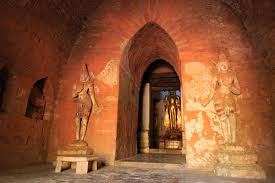
Ngagayon Temple
This is a place where the legend says that Kyanzittha was sheltered by a serpent known as while fleeing from his angry brother and predecessor Sawlu Min. Therefore during his reign over Bagan, King Kyanzittha built this temple with the name of "Nagayon" meaning "sheltered by serpent".
This is a place where the legend says that Kyanzittha was sheltered by a serpent known as while fleeing from his angry brother and predecessor Sawlu Min. Therefore during his reign over Bagan, King Kyanzittha built this temple with the name of "Nagayon" meaning "sheltered by serpent".
Please select the date of travel:
Start Planning!
Start Planning!

Dhammayangyi Temple
Dhammayangyi Temple is a Buddhist temple located in Bagan, Myanmar. Largest of all the temples in Bagan, the Dhammayan as it is popularly known was built during the reign of King Narathu who came to the throne by assassinating his father Alaungsithu and his elder brother, presumably built this largest temple to atone for his sins.
Dhammayangyi Temple is a Buddhist temple located in Bagan, Myanmar. Largest of all the temples in Bagan, the Dhammayan as it is popularly known was built during the reign of King Narathu who came to the throne by assassinating his father Alaungsithu and his elder brother, presumably built this largest temple to atone for his sins.
Please select the date of travel:
Start Planning!
Start Planning!

